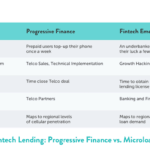From Credit Cards to the ATM: Why Interoperability is the Critical Next Step for Mobile Payments
By enabling the smooth transfer of funds, payment systems are a key component of a functioning economy and society. By looking back at how these systems began and how they were successful, it is possible to project forward to get a glimpse into the future of payments.
Payment systems are constantly changing and evolving as people look for ways to make transactions more seamless and safe. One of the first modern disruptors to established payment methods was the credit card, which allowed people to simply sign for their purchases and be billed at a later stage. While credit cards quickly grew in popularity, the key success factor that enabled them to scale globally was the open-loop system created by the card associations. By enabling interbank cooperation they were able to conduct the seamless transfer of funds between accounts at different banks, making them easy and efficient for customers to use.
At the same time credit cards were taking off as a retail payment device, banks were also looking for ways to serve customers better and enable transactions outside of banking hours. One way they achieved this was through the Automated Teller Machine (ATM). ATMs were able to connect to the interbank networks, which the card associations had already established. By taking advantage of this interoperable open-loop system, ATMs could be used at both the interbank and the cross-border level.
As ATMs became more sophisticated, banking engineers also developed the back-end infrastructure and standards upon which other elements of the payments ecosystem, such as point-of-sale terminals, would eventually depend. By cooperating with each other even while they were in competition, the card companies and banks were able to create a system where their payment method was widely accepted, creating an easy, safe and seamless transaction environment for their clients. It is not the card or ATM itself, but the interoperability of the ecosystem within which they work, that ultimately made them successful.
The Promises, and Realities, of Mobile Money
While credit cards and ATMs are often discussed as widespread, or even ubiquitous payment and banking methods, this is not always the case. In Sub-Saharan Africa, both ATM and card infrastructure and penetration are still extremely low. According to the World Bank, there are less than six ATMs per 100,000 adults across Sub-Saharan Africa and cash is still the dominant form of payment across the continent.
To address this gap, mobile money has emerged as a key system for both banking and payments, and over the last 10 years mobile money has become one of the most important payment technologies across many parts of Africa.
The ubiquitous nature of mobile phones has enabled a range of services. What began as a way to enable peer-to-peer money transfers has become a viable alternative to formal banking services, with a range of products that cover a variety of banking and payment needs. Today, the growth of mobile money accounts across Africa surpasses that of traditional bank accounts.
Despite the popularity of mobile money, it is still a fairly immature payment technology, especially when compared to predecessors such as cards and ATMs. Banks and card schemes have worked together over the last few decades to create an interoperable ecosystem of universal acceptance. Mobile money on the other hand is still largely siloed, with users only able to transact with a single service provider and little to no interoperability between them. If mobile money transactions are to achieve the same growth and ubiquity as card payments, the sector must move to the next phase of its existence and embrace interoperability.
In Interoperability We Trust
The key shift in this model is that the Mobile Network Operator (MNO) will no longer own the channel. Instead MNOs will simply become another of any number of service providers on the channel. This means the end retailer is no longer locked into providing only one kind of mobile money service, allowing them to expand their service offering to end users. Once service providers accept that they don’t need to own the end-to-end channel, it creates space for them to work together and build the joint infrastructure to enable all transactions.
Mobile money providers have already begun experimenting with many different types of interoperability. Account-to-account interoperability, for example, allows a mobile money user on one network to make a payment from their mobile wallet to the mobile wallet of a user on a different network. However, this is still an early phase of interoperability and only enables very basic functionality.
Another type of interoperability is account-to-vendor interoperability. This would mean a customer could use their mobile money wallet to pay for goods and services at a vendor or store, even when the vendor’s mobile point of sale system is enabled by a different network. This level is more difficult as there is not yet standardisation around how mobile payments are collected at points of sale, with networks using a range of solutions such as QR codes, PINs or verification codes. Achieving this level of interoperability will take cooperation within the market to establish standards around how payments are made.
More ambitious levels of interoperability include not only other mobile money providers, but also the formal banking system. A key difference between cards and ATMs, and mobile money solutions, is that cards and ATMs were developed, almost from the beginning, by the banking industry as a way to expand their offerings. Mobile money, on the other hand, has emerged in parallel to formal banking, and is often used as an alternative to a bank account instead of as a tool to access it. The next step of mobile money interoperability would therefore be to connect to formal banks, opening a wider range of financial services.
An emerging example of this can be seen in the West African Economic Monetary Union (WAEMU), in which eight countries are building an interoperable system that will connect users with banks, mobile money providers and microfinance institutions. This project is expanding on the previous regional connectivity that was established for the card network a decade ago. By expanding it to include mobile money, the ecosystem is being made available to large sections of the population that did not previously have access to cards.
Looking ahead, it is important for everyone in the mobile money ecosystem to start considering partnership and cooperation models. Interoperability is not only in the best interest of the customers, who will receive a better service that gives them more freedom to transact, but also in the best interest of the ecosystem as a whole. Enabling interoperability will create more trust with end users, who will feel more confident that they will be able to access their money when they need it. There will also be greater standardisation, regulation and security around mobile money payments, ensuring safer transactions for consumers and lower risk and liability for providers.
At Nomanini, we believe all of the players in the mobile money ecosystem should adopt a spirit of “coopetition” – a combination of cooperation and competition – similar to how banks and card schemes partnered to create a payments network that was larger than any individual company. There is no long-term sustainability for single service platforms, but rather a future in creating a seamless interoperable ecosystem.
Through this “coopetition,” mobile money could have the power to drive the next wave of payments innovation in Africa, unlocking easy and seamless payments that are accessible to everyone.
Vahid Monadjem is co-founder and CEO of Nomanini.
Image courtesy of Mirza Babic.
- Categories
- Finance, Technology



